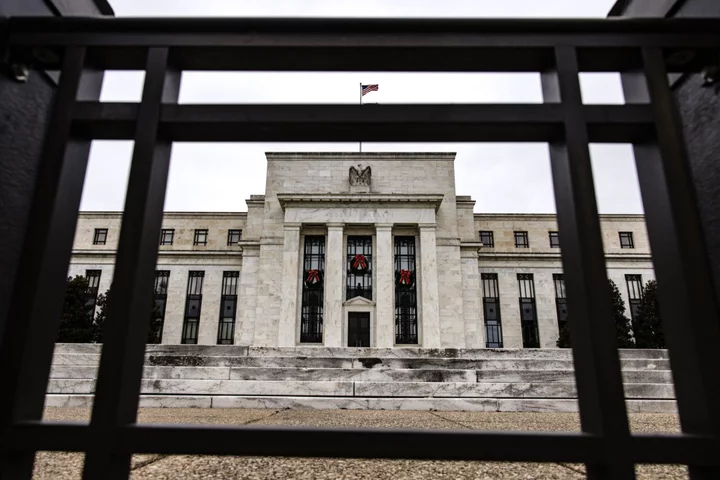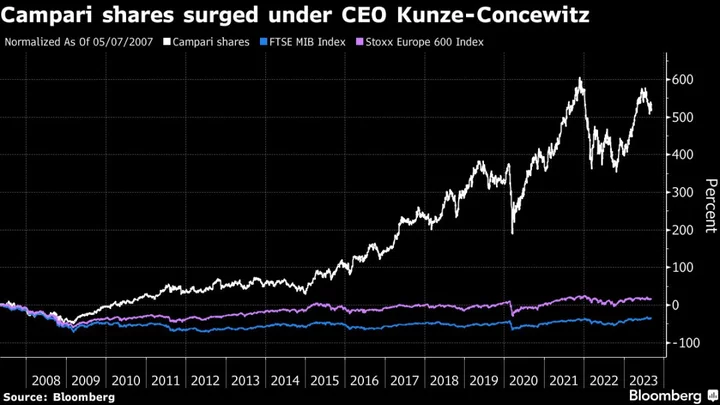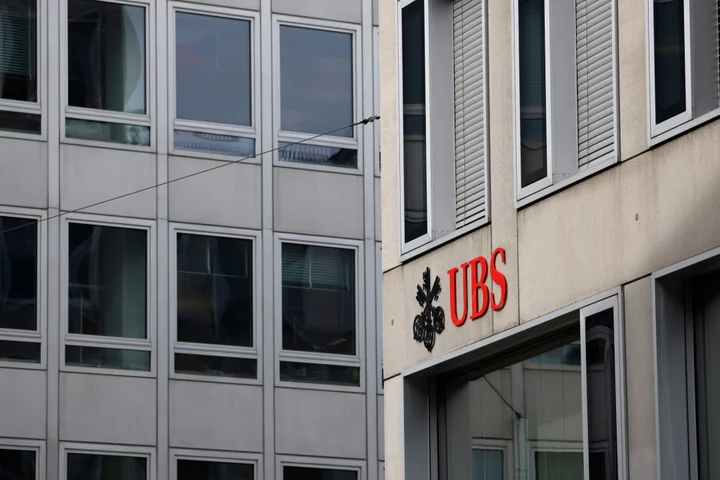A breakout in a closely watched corner of the bond market is signaling the Federal Reserve has more to do to rein in inflation, throwing cold water on prospects of cutting rates anytime soon.
Real yields have featured prominently during this month’s selloff in the Treasury market, with the two-year rate adjusted for inflation reaching levels unseen since 2009, and the 10-year rate climbing back toward March highs. These real yields are an important gauge of the actual borrowing costs for the broader economy and as such are seen as a tool watched by the Fed in its campaign to pull down inflation.
But the latest swing higher in real yields shows that in spite of fraught debt-ceiling negotiations, the world’s biggest bond market senses another jolt of policy tightening and an extended period of staying on hold may be warranted. A similar outlook is being echoed in the swaps market, with traders fully pricing in a quarter-point hike within the next two policy meetings.
That view has found support in recent data pointing to a resilient US economy and sticky inflation. A report Friday showed the inflation rate for US personal spending on items excluding food and energy running firmer than forecast at an annual pace of 4.7% in April. That comes amid upside surprises in UK and European inflation numbers, reminders that central banks may have more work to do and bond yields may keep climbing.
“It is noteworthy that inflation in Europe recently has been elevated too, and although the US is ahead of the game in elevated real rates, it serves as a warning to the Fed that the inflation fight is far from over,” said Dominic Konstam, head of macro strategy at Mizuho Securities.
Yields on Treasury Inflation-Protected Securities maturing in about about two years have shot up more than 60 basis points this month to 2.5%, while the 10-year TIPS yield has climbed nearly 40 basis points to 1.59%.
A Bloomberg Intelligence model of real 10-year yields indicates it is “below fair value” and could test the March highs around 1.65% “given economic fundamentals and market volatility,” Ira Jersey at BI wrote this week. Further upward pressure on real yields is seen dragging nominal Treasury yields along, with the 10-year likely to approach 4%, according to Jersey.
That’s bad news for bondholders at least in the near term. On the flipside, inflation expectations have remained anchored, with the 10-year breakeven rate hovering around 2.25% for most of the past two months, just above the Fed’s 2% target.
“Rightly or wrongly the markets have jumped on the Fed’s story of getting inflation back down to target and they have brought down inflation expectations,” said Robert Tipp, chief investment strategist at PGIM Fixed Income. As the bond market reprices Fed rate expectations and takes out cuts, “that adjustment has to happen through the real rate.”
A key question for investors is whether the latest surge in real yields helps the Fed by tightening financial conditions, thereby allowing the central bank to pause in the coming months and assess the cumulative toll of hikes on the economy.
“The doves at the Fed can point to higher real yields that show more tightening is going on; it’s certainly something we are watching,” said Jonathan Duensing, head of US fixed income at Amundi US. “Real yields look fairly elevated to us, and the breakevens are close to their long-term averages, so buying the real yield is looking like an attractive starting point,” creating “an opportunity to add more duration to your portfolio” for long-term investors.
Amundi still expects slower growth during the second half of the year, allowing rates to “hold around here or head a little higher, then move lower in response to that economic outcome,” Duensing said.
(Adds updates yield levels throughout, chart.)









